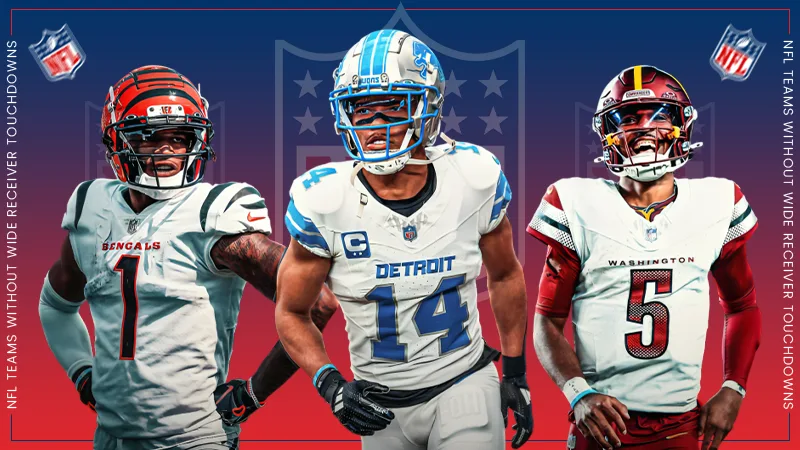
How to Improve Your Forecasts Using an Analytical Approach and Bonus Offers
In 2025, sports analysis has already headed toward improvement. The time for guessing and simple comments is gone. In reality, today’s predictions are based on detailed data, statistical methods, and machine-learning techniques.
This also involves a deeper understanding of strategies, physical aspects, and the context of games. More platforms are now providing advanced analysis tools, interactive lessons, and real-time data settings where users can test their models against actual markets.
Some even offer exclusive promotional bonus for Indonesian players to promote practical learning. Fine analysis is now the key to professional sports predictions, and the training materials available help both beginners and experienced analysts who want to improve their skills.
If you also wish to improve your forecasts, use an analytical approach and bonus offers. Let’s acquire more knowledge about it here.
KEY TAKEAWAYS
- Learn about forecasting models and xG.
- Must include injury and suspension analysis to predict more accurately.
- Emotions can hinder the techniques of predictive analysis.

Forecasting Models and xG
Expected Goals (xG) is turn into a revolutionary indicator in football analytics. This metric shows the quality of chances a team acquires, independently of the actual match result. Prediction strategies based on xG help identify teams that are performing better or worse than their match results suggest.
xG models analyze every shot at goal, taking into account the angle of attack, the field position, and the number of defenders between the ball and the goal. The best betting opportunities often appear when analyzing the gap between xG and the actual result.
Teams with high xG, but low actual performance, are frequently underestimated by bookmakers and present attractive opportunities for analysts.
Consider Motivation and Match Context
Skill is not as important as drive. This means the team’s risk of dropping a level changes a lot, and every goal matters greatly. The same team in a mid-event time lull can lose to an underdog simply because “there’s nothing to lose.”
A third match in seven days implies the starting lineup will include substitutes, the main squad will be at half strength, and the coach is already planning rotations. Current team details must consider nuances.
For teams fighting for the Champions League, a home game against an average opponent may be less indispensable than the upcoming European fixture.
Changing the coach is like restarting a computer. In the first 2–3 matches, the team plays on adrenaline — everyone wants to prove themselves to the new coach. Then the euphoria subsides, and the squad shows its true class.

Injuries and Suspensions
Losing players is important for making good predictions. One cannot predict match outcomes accurately without current information about a team’s players. When analyzing injuries, always consider not only who is missing but also what role the player had in the team, who replaces them, and how this affects the team’s energy.
Primary injury information sources: coach press conferences, official club websites, specialist sports publications, and a team’s official social accounts. It’s critical to distinguish between serious injuries and a coach’s tactical decision not to register a player.
Suspensions are generally easier to predict than injuries. Yellow/red card records from previous matches give a clear view of likely absences in upcoming games.
Working with Lines and Odds Movement
Odds movement signifies the flow of information and money. Sharp changes in the line can indicate important news: lineup changes, injury to a key player, or weather conditions.
Signs of an overinflated market:
• odds do not fit in the teams’ actual statistics;
• public opinion heavily influences the line;
• bookmakers overemphasize the importance of recent results;
• emotional factors (derbies, major rivalries) distort judgment.
It’s also wise to avoid betting on matches right after a major transfer or scandal.
Emotion is the Enemy of Analysis
Emotional selections will undermine even the best analysis. Fanaticism, the urge to recover losses after a failed prediction, attachment to a particular team — all these impede objective assessment of an event.
Safe betting tips always include emotional discipline. Trusted prediction platforms offer tools to track your decisions and analyze your own mistakes.
Three cognitive lapses that disrupt forecasting:
- Confirmation bias — seeking information that confirms preexisting opinions;
- Gambler’s fallacy — the belief that past independent outcomes influence future independent events;
- Halo effect — overrating a team on account of a single brilliant performance.
It is recommended to set clear criteria for each type of forecast.
Make Use of Analytical Resources and Training
Modern analytics programs are more than numbers — they are complete knowledge ecosystems. Today, these platforms come with tools comparable to professional scouting: heat maps, micro-player statistics, and tactical scheme analysis.
The best platforms for online sports betting operate like universities: there you can discover courses from experienced analysts, analysis of difficult matches, and discussions on controversial decisions. Many expert reviews of programs emphasize that high-quality applications combine data with training.
These apps not only generate ready-to-use projections but also teach you to think systematically. Professional analytics is a skill that must be continuously honed, like a muscle in a fitness center.
Ans: Machine-learnings, predictive analysis, quantitative forecasting, and more methods are used for anticipations.
Ans: Mainly, there are two types of analysis: On-field and Off-field analysis.
Ans: Emotional detail filling can cause biases and fallacies, which eventually lead to wrong predictions.
Ans: Yes. Involving injury and suspension data of a group can enable clear analysis.











